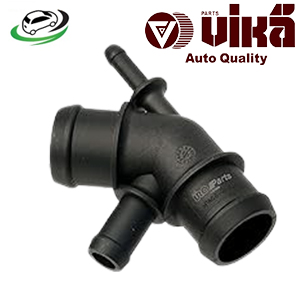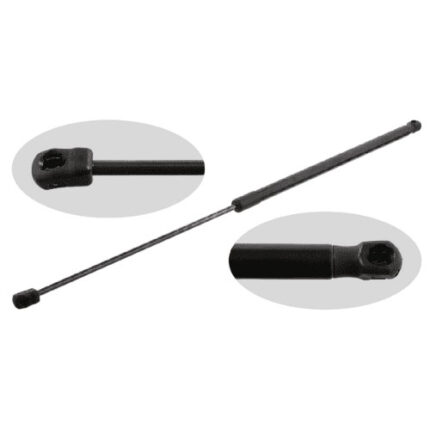-13%
Get Front Wheel Bearing Kit AUDI A3/TT/TT Roadster / VW Bora/Bora Variant/Golf IV/IV Variant 1J0407625
Wheel bearings are critical components of a vehicle’s wheel assembly that allow the wheels to spin smoothly with minimal friction. Located at each wheel hub, they play a vital role in the functionality, performance, and safety of the vehicle. This comprehensive guide delves into the design, function, types, benefits, maintenance, and replacement of wheel bearings.
Design and Function
Design:
A wheel bearing is typically composed of the following elements:
- Inner and Outer Races: Also known as inner and outer rings, these form the structure in which the balls or rollers move.
- Rolling Elements: These can be balls (in ball bearings) or cylindrical rollers (in roller bearings), which reduce friction by rolling between the inner and outer races.
- Cage: Also called a retainer, the cage keeps the rolling elements spaced evenly.
- Seal: The seal prevents dirt, dust, and moisture from entering the bearing, ensuring the lubricants remain clean and effective.
- Lubricant: Grease or oil inside the bearing reduces friction and wear on the moving parts.
Function:
The primary functions of a wheel bearing are:
- Reducing Friction: Allows the wheel to rotate smoothly by minimizing the friction between the wheel and the axle.
- Supporting Load: Bears the vehicle’s weight and any additional forces encountered during driving, such as acceleration, deceleration, and cornering.
- Ensuring Alignment: Maintains proper wheel alignment, which is crucial for vehicle handling and tire longevity.
Types of Wheel Bearings
1. Ball Bearings:
- Description: Uses balls as the rolling elements. They are versatile and can handle both radial and axial loads.
- Application: Commonly used in passenger cars and light trucks.
2. Roller Bearings:
- Description: Uses cylindrical rollers as rolling elements. They are designed to handle higher radial loads.
- Application: Typically used in heavier vehicles, such as trucks and trailers.
3. Tapered Roller Bearings:
- Description: Uses conical rollers and races. They can handle large radial and axial loads.
- Application: Often found in applications where high load capacity is required, like in the front wheels of trucks.
4. Precision Ball Bearings:
- Description: These bearings are designed for high precision and smooth operation.
- Application: Used in high-performance and racing vehicles.
5. Ceramic Bearings:
- Description: Uses ceramic rolling elements for reduced weight and increased performance.
- Application: Found in high-end and performance vehicles due to their durability and low friction.
Benefits
1. Smooth Operation:
- Reduced Friction: Wheel bearings allow for smooth and efficient wheel rotation, enhancing overall vehicle performance.
- Improved Handling: Properly functioning bearings ensure consistent wheel alignment, improving handling and ride quality.
2. Enhanced Safety:
- Load Support: Bearings support the vehicle’s weight and withstand driving forces, contributing to overall vehicle stability and safety.
- Preventing Wheel Detachment: A well-maintained bearing prevents wheel detachment, which is crucial for safe driving.
3. Longevity of Components:
- Extended Tire Life: Proper wheel alignment, facilitated by good bearings, reduces uneven tire wear.
- Protection of Suspension Components: Minimizes stress on other suspension components, extending their lifespan.
Maintenance and Troubleshooting
1. Regular Inspection:
- Visual Check: Inspect the bearings for signs of wear, corrosion, or damage.
- Noise Check: Listen for unusual noises, such as grinding or humming, which can indicate bearing issues.
2. Symptoms of a Failing Wheel Bearing:
- Noise: A grinding, humming, or roaring sound coming from the wheel area, especially when turning, can indicate a failing bearing.
- Wheel Play: Excessive play or wobbling in the wheel when it is lifted and shaken can suggest a worn bearing.
- Uneven Tire Wear: Irregular tire wear patterns can be a sign of bearing issues.
- ABS Malfunction: A faulty wheel bearing can affect the anti-lock braking system (ABS), triggering warning lights.
3. Replacement Procedure:
- Preparation: Gather the necessary tools and replacement bearings. Ensure you have the correct part for your specific vehicle model.
- Lifting the Vehicle: Safely lift and support the vehicle using a jack and jack stands.
- Removing the Wheel: Remove the wheel to access the hub assembly.
- Removing the Old Bearing: Depending on the vehicle, you may need to remove the brake caliper and rotor to access the bearing. Use appropriate tools to remove the old bearing from the hub.
- Installing the New Bearing: Clean the hub and apply new grease. Install the new bearing and reassemble the components in reverse order.
- Testing: After installation, test drive the vehicle to ensure the new bearing is functioning correctly and there are no unusual noises.
4. Professional Inspection:
- Mechanic Inspection: If you suspect an issue with a wheel bearing, have a professional mechanic inspect it. They can accurately diagnose the problem and ensure proper replacement.
- Alignment Check: Ensure the vehicle’s wheel alignment is correct after bearing replacement, as improper alignment can cause premature wear
- Follow us on Facebook for more parts.



